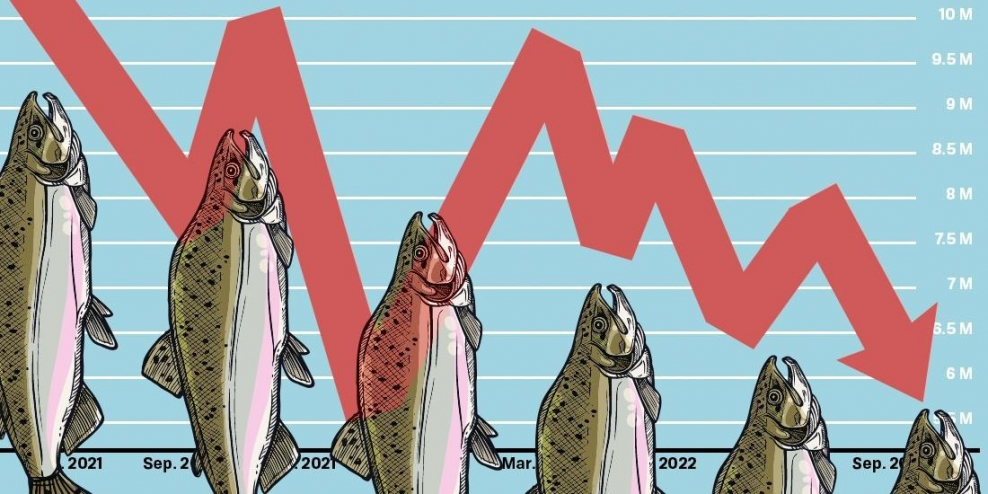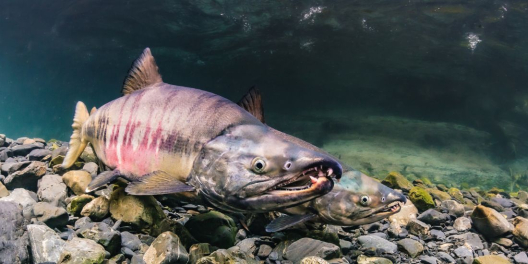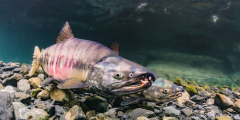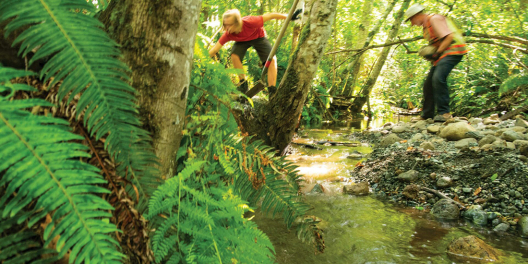Predicting the future is hard, especially when it involves the unpredictable web of life around us.
But predictions matter because they help people make plans. For example, weather predictions determine wedding plans, inflation forecasts help set mortgage rates, and predicted salmon runs set catch limits or, lately, even whether there is a fishing season.
That’s why early predictions for strong sockeye salmon returns had many Islanders cheering. They were hoping for a bumper season after years of strict restrictions on fishing for this prized fish.
Late this spring, the Pacific Salmon Commission was bullish with an estimate of 10 million sockeyes returning to the Fraser River system. 2022 was supposed to be a peak year for Fraser sockeye, which return to spawn on a 4-year cycle.
But soon after the Commission dropped its estimate to 7.2 million, they made another downward adjustment in late August to 5.5 million.
And so the bubble of fishing optimism for the embattled Fraser River sockeye was burst.
The Pacific Salmon Commission isn’t just a blogger with strong opinions. The agency was created in 1937 jointly by the US and Canadian governments under the Pacific Salmon Treaty to manage Pacific salmon stocks.
Greg Taylor, a fisheries expert with the Watershed Watch Salmon Society, called the dropping forecasts “disturbingly bad.”
Kevin Lemkay, a spokesman for Fisheries Minister Joyce Murray, said in a statement to CBC News that DFO” believed [the Commission’s original] run size estimates were far too high and were extremely disappointed to see fisheries proposals allowed based on overly optimistic estimates ….”
Many Canadian salmon lovers say the Pacific Salmon Treaty is failing miserably at dealing with the Alaskan commercial fleet’s ongoing harvest of endangered BC stocks and believe the Treaty needs an overhaul to address modern salmon conservation realities.
However, it’s not all bad news for salmon his year.
The estimate of sockeye returns to Barkley Sound was upped from 400,000 to 800,000. In addition, the Skeena River is expected to experience one of its best sockeye returns in years, with an estimated 4 million coming back.
What to make of this?
Well, it’s complicated.
Stan Proboszcz, Watershed Watch Salmon Society’s senior scientist, says it’s too early to draw any scientific conclusions about why the numbers are up. But he says there’s strong reason to believe that a cool, wet spring that led to strong river and stream flows has boosted fish populations. In addition, cooler sea temperatures in the northeastern Pacific Ocean–which have dropped dramatically from 2019–are likely to have helped sockeye.
“It’s tough to say with much certainty the reasons for some of the good returns, but I would guess the removal of pathogen-spreading fish farms in the Discovery Islands and the Broughton Archipelago is at least providing some relief to wild salmon migrations,” Proboszcz says.










